Ball Python tank size
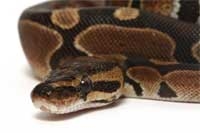
By Colette Sutherland
Many years ago while looking to see what new reptiles were in at the local pet shop, I saw my first ball python, Python regius. Needless to say, a few days later I purchased him and brought him home. I named him Kashmire. Thus began my adventures with ball pythons. Now more than twenty years later I still have Kashmire plus over a hundred other different ball pythons. For those who desire to own a python, the ball python is a wonderful choice. They stay small, generally under five feet and normally have a gentle disposition. Kashmire was a sub-adult when he was purchased and I have had him for more than twenty years. Reports of ball pythons living thirty and even forty years have been recorded! Now on to the adventure of buying your first ball python!
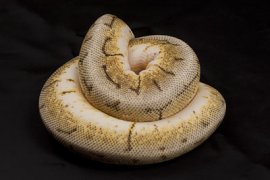 Before you decide to purchase a ball python the first thing you need to do is determine the right kind of cage and equipment needed to properly house your pet. There are many different types of cages on the market today. Let's look at the size of the cage first. A young ball python does not need as much space as an adult, a ten gallon terrarium will be able to house a hatchling ball python until it reaches about 2.5 feet. An adult ball python will be able to live in a twenty to thirty gallon terrarium its' entire life. One of the most important things to consider when purchasing a cage is - Can it be securely closed? Snakes are escape artists and the ball python is no exception. If there is any type of opening that they can get through, they will find it and get out! There are many kinds of terrariums available that have screen tops that slide into place. These tops can be secured by a pin that is placed through the edge of the screen and the end of the molding on the tank.
Before you decide to purchase a ball python the first thing you need to do is determine the right kind of cage and equipment needed to properly house your pet. There are many different types of cages on the market today. Let's look at the size of the cage first. A young ball python does not need as much space as an adult, a ten gallon terrarium will be able to house a hatchling ball python until it reaches about 2.5 feet. An adult ball python will be able to live in a twenty to thirty gallon terrarium its' entire life. One of the most important things to consider when purchasing a cage is - Can it be securely closed? Snakes are escape artists and the ball python is no exception. If there is any type of opening that they can get through, they will find it and get out! There are many kinds of terrariums available that have screen tops that slide into place. These tops can be secured by a pin that is placed through the edge of the screen and the end of the molding on the tank.
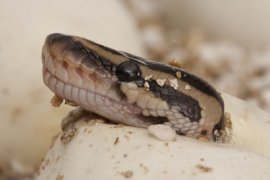 What kind of substrate do you wish to use? There are many different products out on the market to choose from. Astroturf is commonly included with the terrarium. This can be a good substrate choice. If you choose to use astroturf it would be a good idea to buy a high quality astroturf. This will provide a much longer lasting substrate. Make sure that you get at least two pieces. This way when one becomes soiled it can be easily replaced with a clean piece. Aspen bedding is also a commonly used substrate. It is absorbent and easy to clean. Newsprint is another possibility. Newsprint is the white paper that the newspaper is printed on. It is possible to buy unused portions of newsprint from newspaper printers. This is inexpensive and it is also quick to clean up. Products not to use for bedding include the following: corn cob, alfalfa pellets, sand, gravel and bark. No matter which substrate you choose to use it must be cleaned as soon as you notice that it has become soiled.
What kind of substrate do you wish to use? There are many different products out on the market to choose from. Astroturf is commonly included with the terrarium. This can be a good substrate choice. If you choose to use astroturf it would be a good idea to buy a high quality astroturf. This will provide a much longer lasting substrate. Make sure that you get at least two pieces. This way when one becomes soiled it can be easily replaced with a clean piece. Aspen bedding is also a commonly used substrate. It is absorbent and easy to clean. Newsprint is another possibility. Newsprint is the white paper that the newspaper is printed on. It is possible to buy unused portions of newsprint from newspaper printers. This is inexpensive and it is also quick to clean up. Products not to use for bedding include the following: corn cob, alfalfa pellets, sand, gravel and bark. No matter which substrate you choose to use it must be cleaned as soon as you notice that it has become soiled.
You might also like

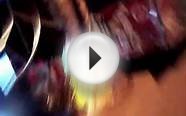
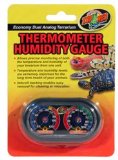
|
Zoo Med Economy Analog Dual Thermometer and Humidity Gauge Pet Products (Zoo Med Laboratories)
|
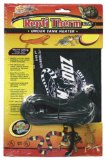
|
Zoo Med ReptiTherm® Under Tank Heater, Medium Pet Products (Zoo Med Laboratories)
|
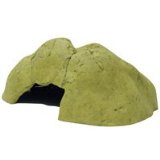
|
Exo Terra Reptile Cave, Extra Large Pet Products (Exo Terra)
|






